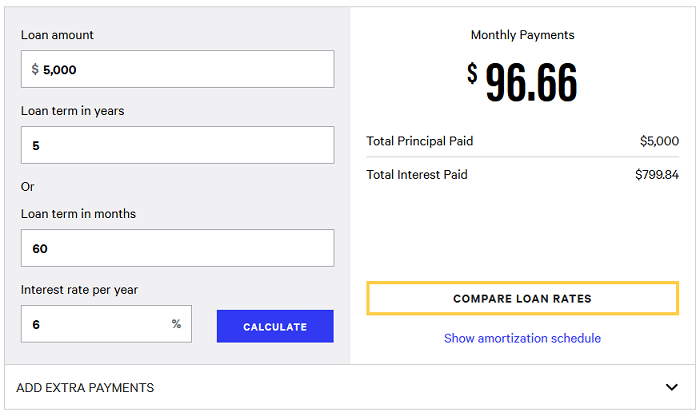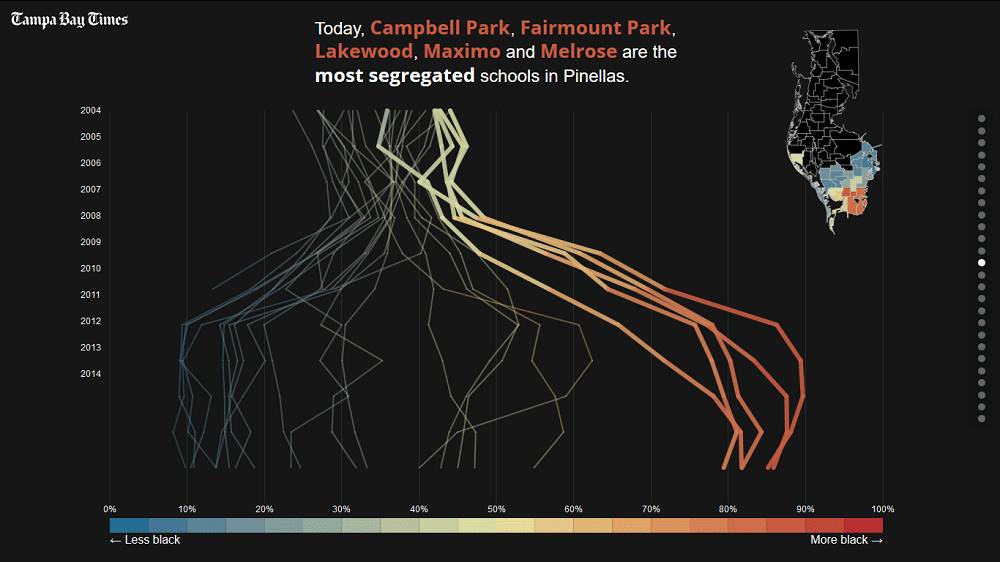
13 Examples of Engaging and Interactive Content
A company’s website is often the first touchpoint for new visitors coming to learn more about its services. It is the main representation of the company’s solution to a problem, the primary resource for curious consumers.
A website can make you or break you, so why wouldn’t you want it to be awesome? When someone arrives to your site, don’t you want them to stay for a bit? How can you use your website to convert online visitors into leads?
Content marketing entails adopting various strategies that “convinces” audiences to use your product. You have seen countless blogs online that present copious amount of information, but these are limited in their ability to generate leads because not all visitors appreciate lengthy texts.
Interactive content plays a huge, crucial role in lead generation, as content interacts with the audience, instead of passively presenting information. Interactive content is done in so many ways, and all these share something in common—there is a need for multimedia (e.g. text, video, audio, quizzes, and even RPG) to pique the curiosity of the market.
Gone are the days when content is purely made up of text. With smartphones and tablets as the primary tools for viewing content, not all audiences have the patience to scroll through an essay-sized article.
To start, offer an immediate and personalized content experience with which your audience can interact. “Experience” is the key word there – you need to provide more than just an information dump. Take your audience on a journey. Teach them something they didn’t already know.
Quick Takeaways:
- Try to maximize customer engagement by personalizing their experience, so that they have a better chance to understand your brand, and by extension, your products.
- More brands and companies are focusing on creating interactive content in response to changing market needs.
- Interactive content focuses on enhancing the quality of content as opposed to increasing quantity.
Reasons for Using Responsive Content
The limits of interactive content are seemingly endless. As marketers become more familiar with the technology and tinker with their creations, we continue to see more personalized, innovative, and unique approaches to demand generation for a product or service.
Even newspapers – you know, those things that get delivered to your front porch every morning with yesterday’s news that you read on your smartphone a couple hours ago – are getting in on the action.
A few years back, The Wall Street Journal made a commitment to interactivity with its WSJ Interactive video series. After clicking on a video, the viewer can then click on related articles, watch relevant clips, and survey market data in real time, among various other things – all without having to leave the full-screen experience of the original video.
There are a number of reasons why interactive content works so well at complementing marketing and lead generation efforts, mainly because it encourages users to “engage” with brand material. The more your prospects are engaged, the more time they spend with your brand, and the result is the formation of a stronger relationship.
Uniqueness
Layering different types of media within a piece of content is more inviting to readers than a simple document with no graphics at all. The times have changed, and audiences prefers content that communicates to them in more than one way.
Technology
Interactive content can be viewed on different platforms, can be shared online or through devices, and can reach thousands of prospects in real-time. Technological advances have made it more accessible and interactive than ever before.
Flexibility and Freedom
You have a lot of options when it comes to using interactive content to generate leads. You can add a survey and pair it with infographic material. You can merge contests and surveys. You can use calculators to make your assessments more fun and realistic. The number of combinations is endless.
Clear and Direct Message
Interactive content “shows” (not “tells”) your prospects what you can do for them, without the need to read lengthy ebooks or white papers. Think about it as informing people about your brand and your products without telling them directly or coming off as too promotional because you’re offering something truly valuable.
Types of Interactive Content
Online interactivity requires relatively new technology, but it is becoming increasingly easy to build and integrate into marketing mixes. Sometimes, it’s just as simple as copying and pasting specific lines of code into your browser. You don’t need to be a developer to implement interactivity on your company’s website. There’s no need to be scared, because it’s far more accessible than you might think.
Here are 5 different kinds of interactive content that can generate leads for your company.
Quizzes
You used to see them in women’s magazines, and admittedly they are fun to play. Aside from the entertainment they bring, quizzes actively engage the audience to participate and read your content. Treat it as a “getting to know your clients” activity.
A 5 to 10-item quiz can be completed in minutes, and though some of your prospects might not complete the quiz, you still gain some information about them and keep them around for longer.
Quizzes are highly shareable through social media platforms, and if your prospect is happy about the results, chances are he or she would tell his friends about it. Quizzes have a higher propensity for sharing and engagement when compared to a downloadable PDF file.
Assessments
Like quizzes, assessments are fun ways to get to know your prospects too. However, the assessment evaluates the clients’ skills and knowledge in a particular area.
Buzzfeed uses a lot of these assessments, which have quirky titles and provide essential information for both you and the prospect. For example, many women want to know what accessories match their personality. This could be addressed in an associated assessment whereby the data collected could help cosmetics and fashion accessories companies learn a lot about their existing and prospecting customers.
Surveys
A few questions are enough to know what your prospects prefer and what their behaviours/motivations are. Surveys provide you the necessary feedback and insight, which is lost in traditional content marketing.
You can use surveys to improve your product or service, or learn more about your target market.
Calculators
Calculators help your prospects determine their ROI should they invest in your product. They can also calculate the costs of poor ad performance or the cost of computer downtime.
Essentially, online calculators can be made to calculate just about anything. The aim is to compel visitors to use them, so make sure that they’re getting something useful or valuable out of the action.
Contests
Contests are a winner in responsive content. People love the challenge and novelty of contests, whether they make use of videos, taglines, selfies, or raffles.
Contests make audiences more creative, and all that creativity is used to promote your brand. For example, you hold a contest whereby users would post taglines on Facebook for a chance to win a free trip to the Maldives. Chances are you would come across some phenomenal taglines because people will put plenty of effort into things if the prize is worth their time. The best resulting taglines can be used to enhance your future marketing campaigns, it’s a win-win.
Infographics
Infographics are a huge deal in spreading the word about your product. You can balance information with thought-provoking questions, highly engaging charts and images, and results to help the audience decide on which product to buy.
Infographics, and other visual content, also gets shared far more on social media than text-based content.
Great Examples of Engaging, Interactive Content
Need some inspiration? Check out how this diverse range of companies are getting interactive right on their own websites. Note the placement of the assets in given locations on the sites, the colors used to make the calls-to-action (CTAs) stand out, and things that make these engaging content examples themselves awesome.
I. Surveys, Quizzes, and Assessments
Zipcar: Is Zipcar for You?
With a CTA located right at the top of Zipcar’s home page, this assessment helps potential customers determine how car-sharing would benefit them.

This content makes frequent use of pictures, has a sleek layout, and covers each of the major concerns that a customer may have. Note the creative CTA on the calculator – “do the math” is more attention-grabbing than something plain and boring.
Dos Equis: Interesting Index
Having retired its “Most Interesting Man in the World” spokesperson earlier this year (only to reintroduce the character this fall), Dos Equis turned the attention to its customers with this interactive assessment. The assessment gets creative with its CTAs (“prove it,” “see where you rank”), and the content is a great opportunity for consumers to interact with the company on a more fun level.
Paycor: See How Paycor Fits You
Right next to the name of the company, Paycor gives viewers the chance to see how they can benefit from its services. A bar drops down and allows the viewer to specify details about his or her organization before getting redirected to another page whose content matches what the viewer might be looking for.
Northstar Travel: What’s New in Los Cabos Quiz
A well-designed interactive quiz that gets viewers acquainted with one of Northstar’s travel destinations, this piece of content makes participants think and engage with the company on a more critical level than they usually would. Everybody loves a vacation – let this quiz take you away to palm trees, a cool breeze, and endless sunny days on the beach.
Intronis: State of the MSP Industry Survey
Intronis’s interactive tools, which include this survey, two quizzes and a calculator, are grouped together with its more traditional pieces of content under the “resources” tab in the menu bar. This survey helps the company detect trends affecting the dynamic information technology channel. The benefit for participants? They get the first look at the results of the survey, and all those who partook were entered to win an Apple TV.
Paradigm Life: Infinite 101 eCourse
A highlighted CTA located right in the middle of the home page leads you to the signup page for Infinite 101, an online educational course that leads the viewer through Paradigm Life’s “Perpetual Wealth Strategy.” Within that course is an interactive quiz that gauges the participant’s financial literacy.
While not directly accessible from the top fold of the website, Paradigm Life’s main focus is first giving value to their visitors by offering a course, and letting them learn a little bit about themselves.
II. Calculators and Simulations
Bankrate Student Loan Calculator

At the top of its home page, just to the side of the company’s logo, Bankrate provides a link to its vast array of financial calculators. These tools, which range from a mortgage calculator to a cost of living calculator, are big value for a viewer looking to make an important financial decision in the coming months.
Credit Karma: Credit Score Simulator
Under the “tools” option in the menu bar, Credit Karma offers five different calculators or simulators.
The blue CTAs encourage action (“try it!”) and the calculators themselves help users make informed decisions about their finances.
Runzheimer: How Much Could You Save?
There are a number of ways to access this piece of interactive content from Runzheimer’s home page – you could either click on the CTA for a free assessment at the top right of the page, or you could access it in the rotation feature below the menu bar. The red CTA pops off the screen, and both options draw your attention immediately.
III. Interactive Infographics
Tampa Bay Times: “Failure Factories”

The first part of a Pulitzer Prize-winning news series, this interactive investigative report outlines how the actions of the Pinellas County School Board have led to five elementary schools in Florida becoming some of the worst in the nation. The colorful interactive graphs, charts, and maps paint a much clearer picture of the issue than words could do by themselves.
General Electric: World in Motion
With “World in Motion,” GE built an interactive map pinpointing all the locations across the globe in which the company is promoting innovation and creating change. For example, in the Boston area, GE’s research hub has facilitated the adoption of an enhanced process for analyzing water by power and water industry players. This content engages the viewer on a more intimate level, one that traditional content does not reach as consistently.
Rosetta Stone: Interactive Demo
The most prominent feature on Rosetta Stone’s website – located front and center and highlighted with yellow – is the CTA for the company’s interactive demo. With an attention-grabbing photo and text that promotes action from the viewer (“Results Matter”), Rosetta Stone encourages potential customers the chance to try out its product for free with an interactive tutorial.
The Washington Post: “The Waypoint: A Visual Journey Through Lesbos, the Gateway of Europe”
The Post creates a stunning full-screen experience with this example, one that grabs the reader’s attention with impressive visuals that have rarely been seen before. This content also goes a step further in engaging the senses by making heavy use of audio. Listening to the splashing of the open waters and hearing the stories of migrants to Europe transports the reader from his or her desktop computer to the smuggling lifeboats themselves.
How to Generate More Content Engagement (Without Creating More Content)
Ever feel like your content team is stuck in creation mode? You know – as soon as you finish one blog post or eBook, you’re onto the next one, giving little thought to extending the lifespan of the piece of content you just finished.
The quality vs. quantity content debate is ongoing. On the quantity side, it’s important to create a steady stream of fresh content to remain topical, engage subscribers, and increase inbound traffic.
On the quality side, your content will only be valuable enough to generate engagement, subscribers, backlinks, leads, etc. if it exceeds a certain standard.
In other words, if the quality of your content is suffering for the sake of quantity, you have a problem. It might be time to give your editorial calendar a break and focus on getting more value out of the content you already have.
Here are a few ideas for how to generate engagement without having to create more content.
Think Evergreen
If you’re in an industry where it makes sense for your brand to cover highly topical content, don’t stop on my account. However, if your audience will find more value from evergreen content topics – content with a longer shelf life – plan them carefully.
Build a finite list of evergreen topics for each persona, and create 10X content around each key topic (this is also a great practice for SEO purposes). Consider things that could easily go out of date, including:
- Stats – Stats are important to prove any point or demonstrate industry trends. Make sure that any stats you include are from a recent, credible source so they don’t date your content (and compromise your own content’s credibility).
- Trends – Remember frosted tips? Some trends never turn into a best practice (nor should they). Be critical when writing about trends, and if you’re unsure, consult an industry expert.
- Product – Your product will evolve over the years. Keep this in mind if you include screenshots or talk specifically about features and capabilities. Talk to your product manager about providing a product roadmap, and keep track of where you include screenshots so you can easily update them.
Thinking evergreen will make it much easier to execute a content strategy that’s focused on longevity. However, even the most evergreen of evergreen content topics will need to be updated eventually, which brings us to our next point…
Regularly Implement Historical Optimization
Historical optimization is exactly what it sounds like: optimizing “old” content so it’s as good as new. The optimization process involves analyzing your content to determine which old pieces are top performers, editing and updating them, and then re-publishing them as part of your content schedule.
This has a number of benefits:
- It ensures all content in your resource center is fresh and up-to-date
- It can improve your content’s performance
- It’s easy to scale when implemented as part of your regular publishing schedule
Syndicate, Re-Publish and Re-Promote
Once you have a content strategy that’s designed for longevity (i.e., you’re focusing on publishing a certain amount of evergreen content and you are performing regular historical optimization), it’s time to start reviving your content via promotion.
Re-promote your content on all of your regular promotional channels – social media, email, etc.. Schedule it to be featured at the top of your resource center to improve discoverability. Encourage your entire team to share it on social again.
If it fits your audience, take advantage of syndication and republishing channels like LinkedIn Publishing and Social Media Today (which allow for your content to be republished with a canonical URL, thus avoiding any duplicate content issues).
New platforms mean new audience exposure, which is necessary to prolonging your content’s lifespan and generating more engagement.
Over to You
Interactive content allows information to go back and forth between your sales team and your prospects. It can help you generate quality leads and keep them highly engaged with your brand. Brands now need to develop new and innovative ways to engage and interact with their audiences. Give your editorial calendar a break (if only for a few days) and focus on getting more value out of your “old” content. It doesn’t deserve to collect dust in the depths of your resource center – bring it out and let it shine.
You work hard and pour tons of time and money into the content you create. Make sure it’s bringing in positive ROI!
If you are ready to get more traffic to your site with quality content that’s published consistently, check out our Content Builder Service. Set up a quick consultation, and I’ll send you a free PDF version of my books. Get started today–and generate more traffic and leads for your business.


![How to Create Effective Thought Leadership Content [Examples Included]](https://marketinginsidergroup.com/wp-content/uploads/2023/09/Screenshot-2023-08-29-at-11.07.57-AM.png)



